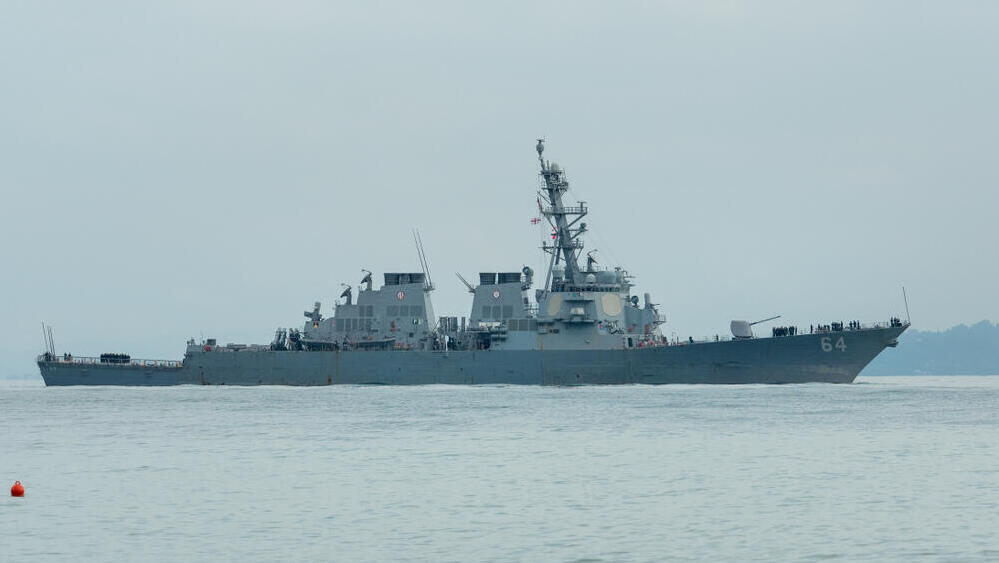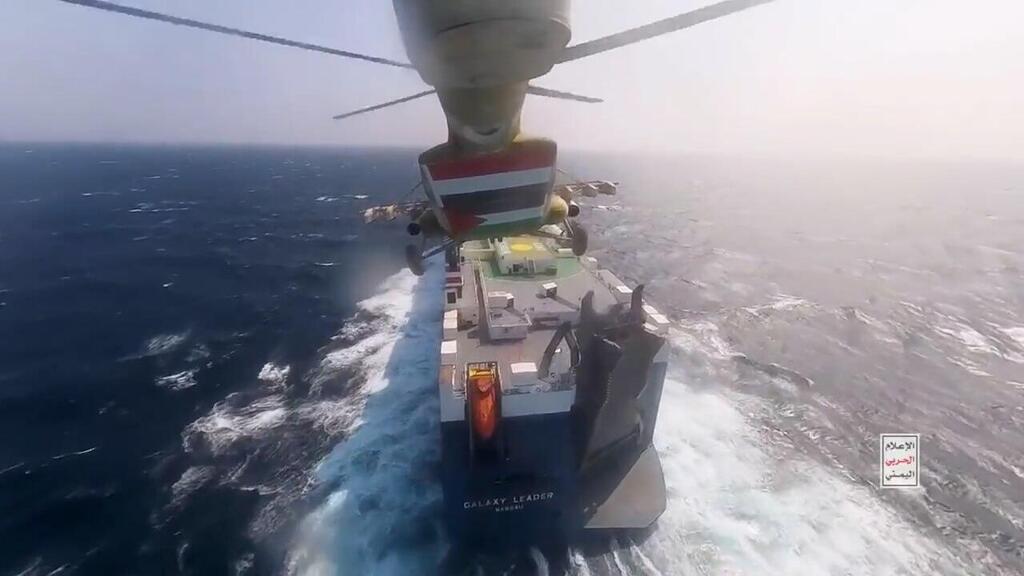Getting your Trinity Audio player ready...
Houthi military parade in Sana'a
Greece has advised commercial vessels sailing in the Red Sea and the Gulf of Aden to avoid Yemeni waters, keep only the necessary crew members on the bridge and follow alerts issued by maritime authorities to avoid attacks in the area. Greek ship owners control about 20% of the world's commercial vessels in terms of carrying capacity.
Read more:
The Greek announcement was made after leading shipping companies have said they were rerouting their vessels via the Cape of Good Hope at the tip of the African continent to avoid Houthi attacks, adding days to their journeys with possible ramifications to the world-wide economy.
The U.S.-led coalition, established to provide safe passage in the area, would attempt to avoid attacking the Yemeni rebels after Washington succeeded in negotiating a cease-fire between them and Saudi Arabia after an eight-year war, limiting the scope of what can be done to prevent more Houthi aggression and ensure safe passage in the long-term.
The USS Carney, a naval destroyer deployed to the area, on Saturday shot down 14 Houthi drones launched at vessels in Bab el Mandeb strait, the U.S. Central Command (CENTCOM) said.
The Carney is equipped with surface-to-air missiles, explosive shells from the destroyer’s 5-inch main gun and additional weapons systems. It also has the ability to wage electronic warfare that can cut off communications between the drones and their operators. "The drones are slow and can be hit by cheap missiles or even the ship's gun. Faster missiles must be intercepted with more sophisticated interceptor missiles,” John Bradford, a military expert told CNN.
The USS Carney has Standard Missile-6 (SM-6), an advanced weapon that can shoot down ballistic missiles with a range of up to 370 kilometers, costing $4 million; the Standard Missile-2 (SM-2) costs $2.5 million, with a smaller range of 185 to 370 kilometers; and the Evolved Sea Sparrow Missile (ESSM) costs $1 million.
The destroyer’s Phalanx close-in weapons system – Gatling guns that can fire up to 4,500 rounds a minute – could handle drone or missile threats that get within 1.5 kilometers (1 mile) from the warship.
This is a less expensive weapons but if the drones can reach that close to the vessel, failing to shoot it down could cost lives. “A single missile or single drone does not sink a U.S. warship, but it can kill people," Bradford said, adding that it may also damage the ship, which would require it to withdraw for repairs.
Thus far the Houthis have not launched an attack with swarms of drones, like the Russians have done in the war in Ukraine. Such an attack may not be successfully thwarted by the U.S. Navy and UAVs that evade intercept may then go on to explode on commercial vessels.
"Our military force has an array of weapons, some of which were used in the current conflict," a Houthi officials told the UK-based, Qatari-owned Al-Araby Al-Jadeed newspaper. "But we also have other secrets that may be revealed at the appropriate time," he said.
The official said the Houthis have several types of naval mines, surface-to-air and cruise missiles, including the kind used against Saudi Arabia while successfully avoiding its defenses, and UAVs. He said most of the weaponry was developed and produced in Yemen.
In September, the Houthis exhibited their vast military capabilities in a parade in the Yemen capital of Sana'a, that also included their air defenses.
Israel's Institute for National Security Studies (INSS) said most of the arsenal at their disposal comes from Iran. In a report published last month, the INSS said the Houthis are equipped with medium- and long-range ballistic missiles, cruise missiles, sea-to-sea missiles, attack and suicide UAVs, and a fleet of drones. The Houthis even have proven capabilities and operational skills of unmanned vehicles able to launch attacks as they have done against Saudi Arabia in 2019 and 2021, and against the UAE in 2022.
"The Houthis' ballistic missiles are Iranian missiles with a range of 1,600 km-2,000 km. This is the advanced Iranian Shehab-3 missile which reaches a range of 2,000 km, or other versions of the Shehab such as the Burkan-3 missile with a range of approximately 1,200 km," the report said.
"The Sumar cruise missiles in their various forms have a range of 2,000 km and the ability to carry a 500 kg payload. Another cruise missile with a shorter range is Quds-2, and efforts are underway to upgrade its operating range and carrying capacity. The Samad 4 attack UAV with a range of 2,000 km-2,500 km and a payload of 45 kg of explosives completes the aerial arsenal of the Houthis," according to the report.
INSS also said the maritime threat of the Houthis stems mainly from the C-801 and C-802 naval missiles and skilled commando forces.







